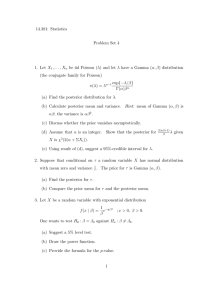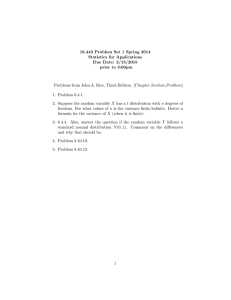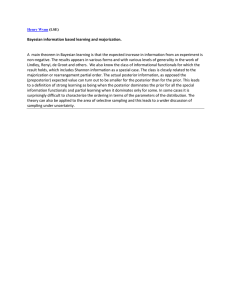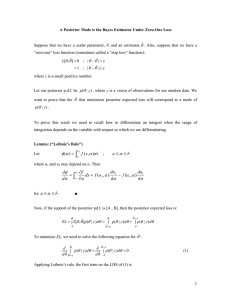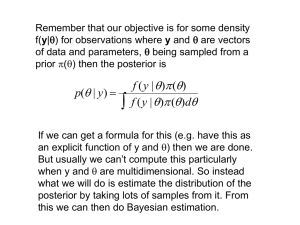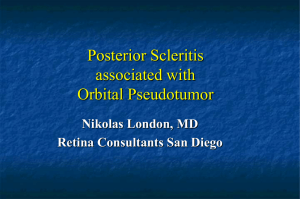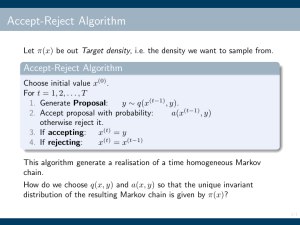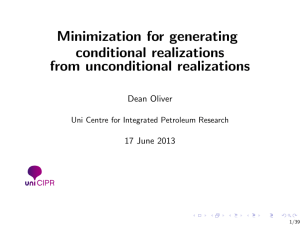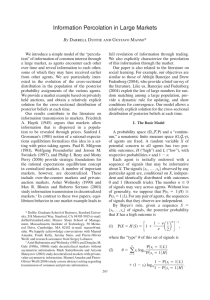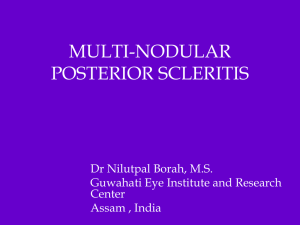14.384: Time Series Analysis. Final Exam.
advertisement
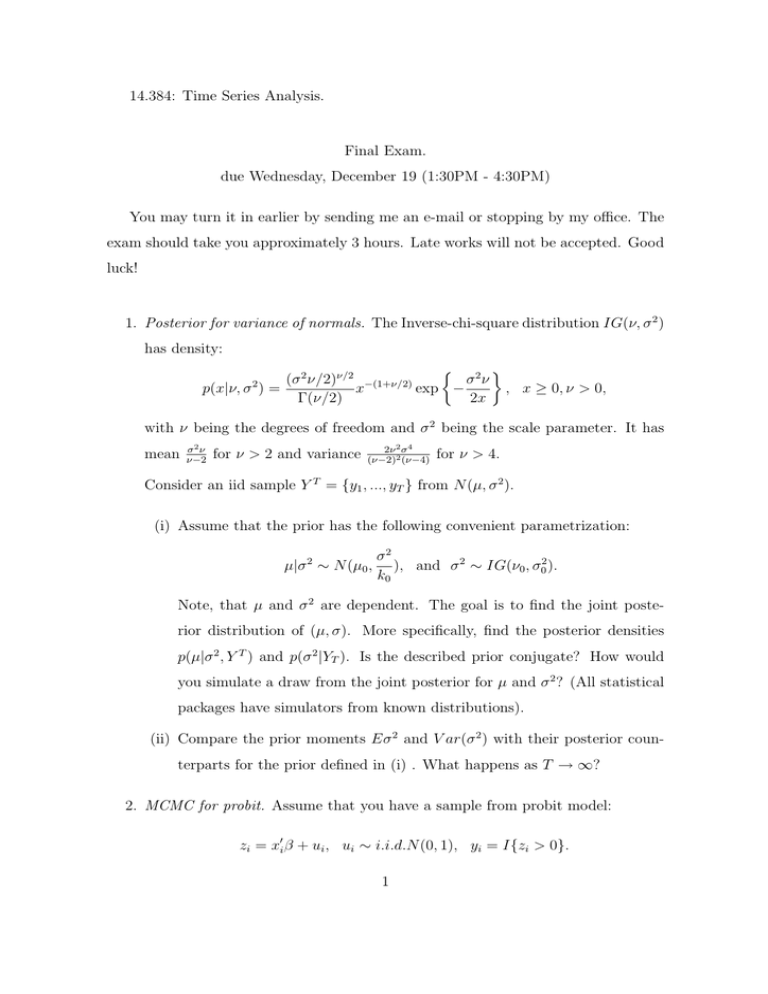
14.384: Time Series Analysis.
Final Exam.
due Wednesday, December 19 (1:30PM - 4:30PM)
You may turn it in earlier by sending me an e-mail or stopping by my office. The
exam should take you approximately 3 hours. Late works will not be accepted. Good
luck!
1. Posterior for variance of normals. The Inverse-chi-square distribution IG(ν, σ 2 )
has density:
½ 2 ¾
(σ 2 ν/2)ν/2 −(1+ν/2)
σ ν
p(x|ν, σ ) =
, x ≥ 0, ν > 0,
x
exp −
2x
Γ(ν/2)
2
with ν being the degrees of freedom and σ 2 being the scale parameter. It has
mean
σ2 ν
ν−2
for ν > 2 and variance
2ν 2 σ 4
(ν−2)2 (ν−4)
for ν > 4.
Consider an iid sample Y T = {y1 , ..., yT } from N (µ, σ 2 ).
(i) Assume that the prior has the following convenient parametrization:
µ|σ 2 ∼ N (µ0 ,
σ2
), and σ 2 ∼ IG(ν0 , σ02 ).
k0
Note, that µ and σ 2 are dependent. The goal is to find the joint posterior distribution of (µ, σ). More specifically, find the posterior densities
p(µ|σ 2 , Y T ) and p(σ 2 |YT ). Is the described prior conjugate? How would
you simulate a draw from the joint posterior for µ and σ 2 ? (All statistical
packages have simulators from known distributions).
(ii) Compare the prior moments Eσ 2 and V ar(σ 2 ) with their posterior counterparts for the prior defined in (i) . What happens as T → ∞?
2. MCMC for probit. Assume that you have a sample from probit model:
zi = x0i β + ui , ui ∼ i.i.d.N (0, 1), yi = I{zi > 0}.
1
You observe {xi , yi }ni=1 . The variables zi0 s are not observable. Prior for β is
normal with mean β0 and variance matrix B0 . You want: 1) to get the Bayesian
estimate of β minimizing the quadratic loss function; 2) to test H0 : β > a vs
H0 : β < a if your losses from a type 1 error are two times bigger than the losses
from a type 2 error.
(i) Suggest a Gibbs sampling procedure to get draws from the posterior.
(ii) Describe the simulation procedure and calculation of results in detail.
Imagine you have an RA who knows nothing about econometrics, but
knows mathematics (with matrix algebra) and programs well. Write stepby-step instructions for him.
(iii) Describe how you would check the convergence of your procedure.
(iv) Now assume that instead of a normal prior, you decide to use some other
continuous prior p(β) with bounded pdf (which you can calculate). Could
you suggest a modification of the procedure described above? (Hint: think
about M-H inside Gibbs sampling.)
2
MIT OpenCourseWare
http://ocw.mit.edu
14.384 Time Series Analysis
Fall 2013
For information about citing these materials or our Terms of Use, visit: http://ocw.mit.edu/terms.
